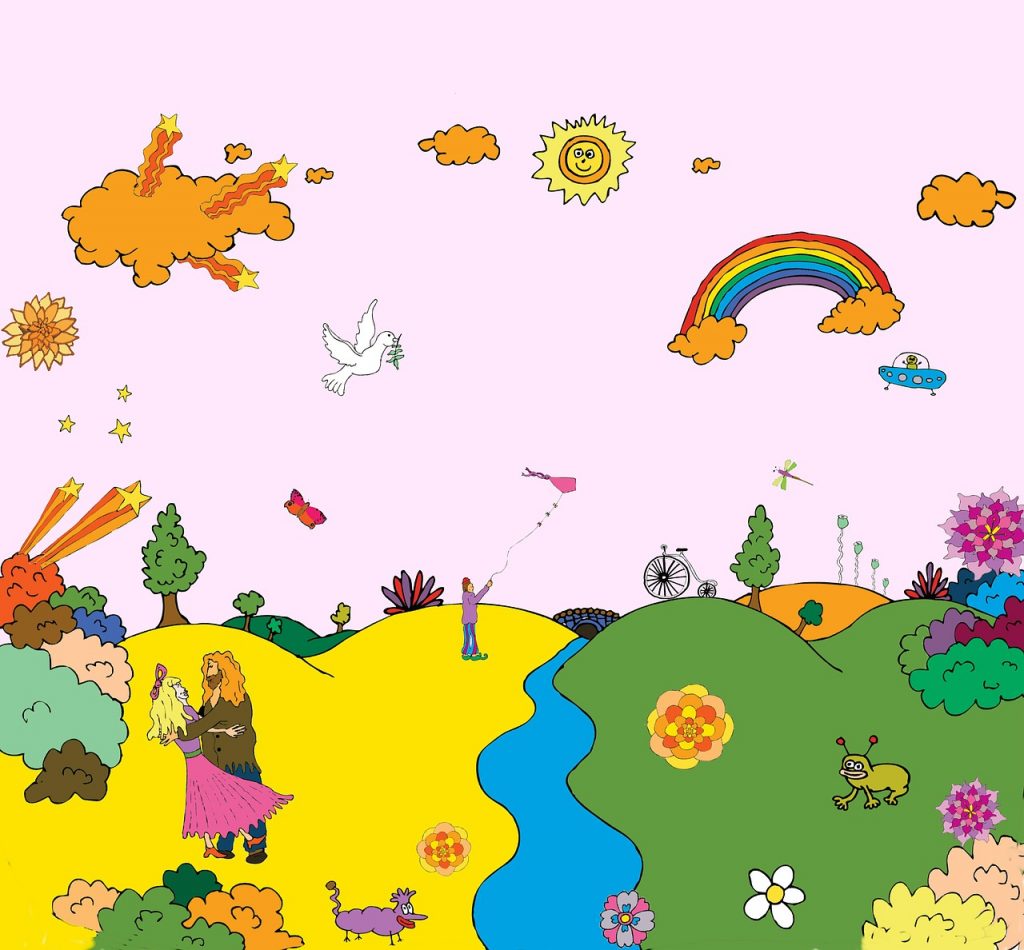3 Days of Peace and Music Posted by Gary Locke on Aug 8, 2019 in Culture
For three days in August 1969, a small community about 100 miles north and west of New York City became the world’s most popular destination for music fans. A hastily organized, some might say disorganized, music festival ultimately resulted in probably the most historic concert in the history of popular music. It was advertised as “An Aquarian Exposition: 3 Days of Peace and Music.” We know it as Woodstock.
Yasgur’s Farm
The founders and organizers of the concert were looking to promote their recording studios. They had a studio in New York City and hoped to build a similar one in Woodstock, NY. Some of the most famous names in music at the time, like Bob Dylan, were known to frequent the Woodstock area. Soon, they had the idea of creating a popular music festival to lure these famous acts to their studios. They called themselves Woodstock Ventures, although they never actually planned to hold the festival in the town of Woodstock. Multiple sites near Woodstock were considered and ultimately rejected. One venue, Wallkill, NY, was selected and planning for the concert was ongoing until as late as one month prior to the festival when the town ultimately canceled due to portable bathroom regulations.
Finally, the promoters found a 300-acre farm owned by Max Yasgur in the town of Bethel, 43 miles south of Woodstock. It had a large, sloping hill which led down to a field which could serve as the area for the stage. There was also a big pond on the property. With days to go before the concert, Bethel granted permission for the concert with the understanding that there would be a maximum of 50,000 tickets sold. However, the organizers had actually sold over 180,000 tickets, and expected about a total of 200,000 people to attend. In fact, nearly a half-million people showed up.
Another Day in Paradise
It was like a pilgrimage to the promised land of rock and roll. Thousands and thousands of people arrived by car, hopelessly blocking roads in the area. People just left their cars and walked for miles. News reports announcing the closure of the New York State Thruway, which spans the entire state from East to West, proved to be false. It’s believed that authorities spread these stories in an effort to get people to stay home. It didn’t work. The promoters quickly realized that they couldn’t stop people from just walking around the fences, so the vast majority of those in attendance never paid for a ticket.
And it rained, hard and often. By the morning of the third day, the farm was reduced to little more than a muddy pit. The conditions were extremely unsanitary, and food quickly ran out. Many of the attendees, and the musicians, were taking drugs. There were dozens of messages from loudspeakers throughout the festival warning of bad LSD, people in need of medical attention, and the dangers of climbing on the scaffolding of the stage. New York Governor Nelson Rockefeller threatened to call out the state’s National Guard but was persuaded against that action.
Nevertheless, the event was remarkably peaceful. It was a party. People looked after each other. Remember that pond? It became a popular place to hang out and go skinny-dipping. There was yoga and meditation, jugglers and dancing, and lots of impromptu sing-alongs. Despite this mass of humanity under horrible conditions, looking much like one of Dante’s levels of hell, it was largely harmonious and joyful.
Gonna Join in a Rock and Roll Band
Ironically, many of those who came could never hear much, if any, of the music. There were just too many people and the acoustics were horrible, often due to bands who hadn’t prepared for performing under those conditions. It was also hard to hear over all that rain. Too bad, because the music from most of the performers was astonishing.
From 12:30 am to nearly 10 am Sunday morning, the acts were Creedence Clearwater Revival, Janis Joplin, Sly and the Family Stone, The Who, and Jefferson Airplane. Other performers included Crosby, Stills, Nash and Young, Santana, Joan Baez, and Jimi Hendrix, who closed out the concert early Monday morning with possibly the most famous live rock performance ever.
Max Yasgur’s farm was trashed, but the experience left him filled with hope. Nearly half a million people came together for peace, love, and rock and roll. “If we join them,” he said, “we can turn those adversities that are the problems of America today into a hope for a brighter and more peaceful future … ” (source: Robert Stephen Spitz, Barefoot in Babylon.

Build vocabulary, practice pronunciation, and more with Transparent Language Online. Available anytime, anywhere, on any device.




